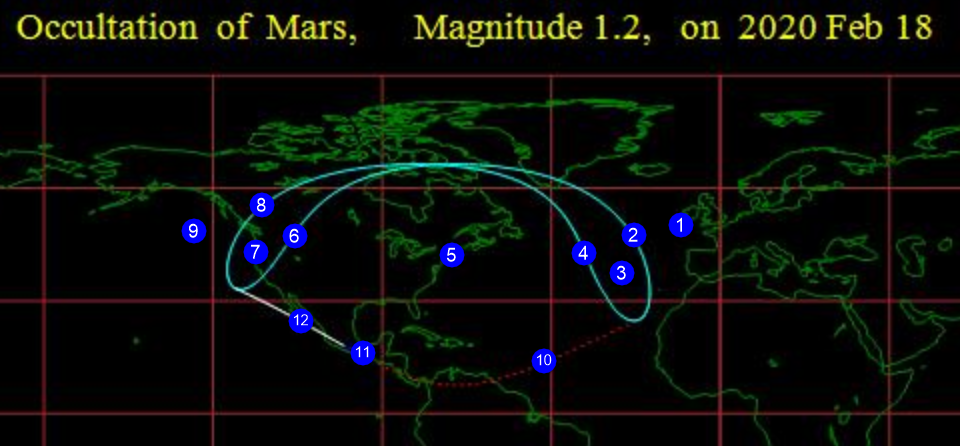Unfortunately, there was a server problem in the days leading up to the exciting Mars occultation. (It didn't matter to me because it was, unfortunately, cloudy where I live.)
This description of the colored lines is from a temporary page provided by IOTA:
The turquoise curves show where the disappearance or reappearance occurs at moonrise (left side) or moonset (right side); there is no northern limit as that misses the Earth to the north. The southern limit of the occultation, from which a partial occultation will be visible in a strip about 5 miles wide, crosses the n.e. Pacific Ocean and southern Mexico (white line, event at night), Central America (dark blue line that’s hardly visible, event during morning twilight), and northern S. America and the Atlantic Ocean (red dotted line, event during daylight).
If I am interpreting the image correctly, the limits are as follows (tl;dr 5: Entire occultation is visible)
- No occultation is visible because the Moon has already set.
- Mars disappears at moonset.
- Mars disappears before moonset (so is visible), but reappearance occurs after moonset (so is not visible).
- Mars disappears with the Moon above the horizon, but Mars reappears at moonset. (Entire occultation barely visible.)
- Entire occultation is visible.
- Mars disappears at moonrise.
- Mars disappears before moonrise (so is not visible), but reappearance occurs after moonrise (so is visible).
- Mars reappears at moonrise.
- No occultation visible because the Moon has not risen.
- Mars grazes southern limb of the Moon (occurs during daylight).
- Mars grazes southern limb of the Moon (occurs during twilight).
- Mars grazes southern limb of the Moon (occurs during night).
Sometimes the colors along the graze line (the southern limit in this case) represents whether the graze occurs on the dark limb of the Moon or the bright limb, but that does not appear to be the case here.
